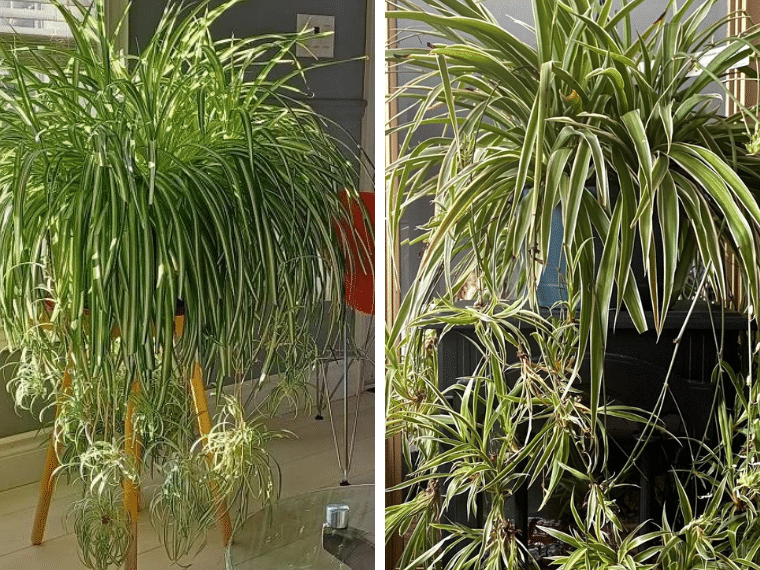Spider plants (Chlorophytum comosum) are one of the most popular and easy-to-care-for houseplants. They are known for their graceful, arching green and white striped leaves and their ability to thrive in various indoor conditions.
While they are naturally robust, many plant enthusiasts seek ways to make their spider plant bushier and more lush.
If your spider plant looks thin, sparse, or leggy, don’t worry! With the right care techniques and tricks, you can encourage dense foliage growth and create a fuller, healthier plant.
In this guide, we will explore 8 proven methods to help your spider plant grow thick and vibrant.
1. Provide the Right Amount of Light
One of the key factors in achieving a bushy spider plant is ensuring it gets the proper amount of light exposure.
Best Lighting Conditions:
✅ Bright, indirect sunlight – Encourages strong, healthy growth.
✅ Avoid direct sunlight – Too much direct exposure can scorch leaves.
✅ Low light tolerance – While spider plants can survive in low light, they may become leggy and weak.
Tip: Place your spider plant near a north- or east-facing window for optimal growth.
2. Regular Pruning Encourages Bushier Growth
Pruning is essential to maintain a compact and full spider plant. Cutting back the leaves encourages new growth and helps the plant develop a denser shape.
How to Prune a Spider Plant:
- Use sharp, clean scissors or pruning shears.
- Trim yellow, brown, or leggy leaves at the base.
- Remove old, long runners (spiderettes) to redirect energy to the main plant.
- Trim in early spring to stimulate vigorous growth.
✅ Pruning not only shapes your plant but also boosts its overall health.
3. Water Properly (But Don’t Overwater!)
Watering is a critical aspect of keeping your spider plant healthy. Too much or too little water can affect the fullness of your plant.
Best Watering Practices:
✅ Water when the top inch of soil is dry.
✅ Avoid overwatering – Spider plants hate soggy roots, which can lead to root rot.
✅ Use distilled or rainwater to prevent leaf tip browning (caused by chlorine and fluoride in tap water).
✅ Water less in winter when the plant’s growth slows down.
Tip: Always ensure your pot has drainage holes to prevent excess moisture buildup.
4. Choose the Right Pot and Soil
The right pot and soil mix play a significant role in promoting healthy and bushy growth.
Pot Selection:
✅ Choose a slightly snug pot – A tight-fitting pot encourages the plant to grow more leaves rather than expanding its roots.
✅ Ensure drainage holes – Prevents root rot and keeps soil aerated.
Best Soil Mix:
✅ Well-draining, light potting mix.
✅ Mix peat moss, perlite, and compost for added nutrients.
✅ Avoid heavy, dense soils that retain too much water.
Tip: Repot your spider plant every 1-2 years to refresh the soil and prevent root binding.
5. Fertilize for Maximum Growth
Spider plants are not heavy feeders, but occasional fertilization helps maintain lush, vibrant foliage.
Best Fertilizing Practices:
✅ Use a balanced liquid houseplant fertilizer (10-10-10 or 20-20-20).
✅ Apply fertilizer once a month during spring and summer.
✅ Reduce feeding in fall and winter when growth slows.
✅ Avoid over-fertilizing, which can lead to brown leaf tips and weak growth.
6. Encourage New Growth with Spiderettes
Spider plants naturally produce offshoots (spiderettes or babies) that can be used to increase bushiness.
How to Use Spiderettes for a Fuller Plant:
continue reading in page 2





